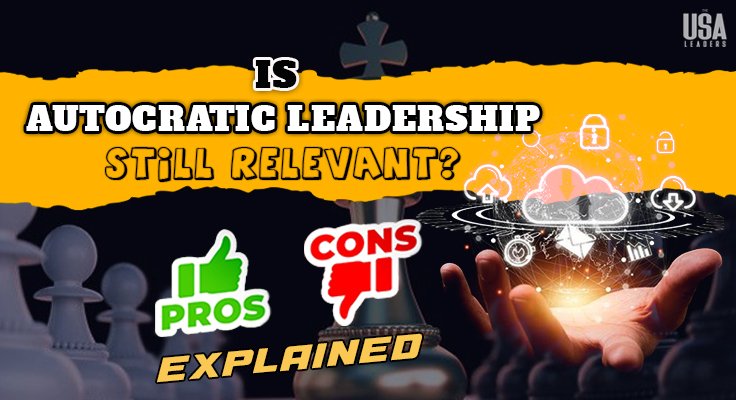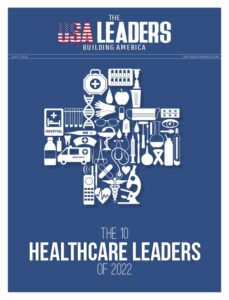Have you ever wondered what kind of leader you are, or what kind of leader you want to be? Maybe you’ve encountered a boss who makes all the decisions and expects you to follow them without question. This leadership style is called autocratic leadership. But is it the best approach? Is it the only option?
In this blog, we’ll delve deep into its core principles, and how it impacts workplaces. We’ll also explore the history to examine how famous autocratic leaders wielded power. Additionally, we’ll analyze the impact of their leadership on their societies.
By the end, you will understand this leadership style clearly. You will also learn its advantages and disadvantages and see how it compares to others. So, let’s begin!
Definition and Core Principles
Autocratic leadership, or authoritarian leadership, involves one leader who controls all decisions. This leader dictates policies and procedures. Consequently, this style features individual control. Leaders make decisions independently, with minimal input from team members.
The core principle of authoritarianism is the centralization of authority. Leaders hold all the power and responsibility for decision-making and typically expect obedience and compliance from their subordinates.
Key Characteristics of Autocratic Leaders
- Decision-Making Power: Autocratic leaders possess absolute authority and often make choices quickly without consulting others. Their ability to make prompt decisions can be advantageous in crisis situations requiring immediate action.
- Clear Direction: These leaders provide clear, direct instructions and expect their team to follow them without question. Moreover, they often set specific expectations and guidelines to complete tasks as envisioned.
- Strict Supervision: Autocratic leaders closely monitor the performance of their subordinates, maintaining strict control over processes and outcomes. This high level of oversight helps ensure consistency and adherence to standards.
- Low Tolerance for Dissent: They typically have a low tolerance for disagreement or feedback, preferring to maintain control and minimize challenges to their authority. So, it can create an environment where creativity and innovation are stifled.
- High Expectations: Autocratic leaders often set high standards for performance and productivity, pushing their teams to meet ambitious goals and objectives.
Evolution of Autocratic Leadership
Authoritarianism has a long history, evolving through different eras and societies. In ancient civilizations, kings, pharaohs, and emperors held absolute power, making all decisions.
During the Middle Ages, lords and monarchs had total control over their lands and people, continuing the autocratic tradition. The Renaissance and Enlightenment later challenged this model, promoting more democratic governance, but authoritarianism persisted in many areas.
In the modern era, the Industrial Revolution witnessed powerful industrialists use autocratic leadership to drive efficiency and growth. Moreover, the 20th century also saw dictators and totalitarian regimes exemplifying extreme autocratic leadership.
According to Leadershipiq.com, 21% of employees see the benefits of autocratic leadership, especially with a strong decision-making leader. However, in recent decades, regions like Eastern Europe, Latin America, and parts of Asia have moved towards more democratic systems, reducing autocratic leadership.
3 Notable Autocratic Leaders in History
These historical figures highlight the significant influence autocratic leaders have had on shaping societies and altering the course of history. While their leadership styles often led to periods of strong control and rapid change, they also frequently resulted in oppression, conflict, and widespread suffering.
- Julius Caesar: As a Roman dictator, Caesar exemplified autocratic leadership by centralizing power and making significant reforms in governance, military, and society. As a result, the Roman Republic collapsed and the Roman Empire formed.
- Louis XIV of France: Known as the “Sun King,” Louis XIV ruled with absolute authority, exemplifying autocratic leadership by centralizing power and controlling every aspect of the French government and society. His reign is often cited as the quintessential example of absolute monarchy.
- Adolf Hitler: Hitler’s authoritarian of Nazi Germany is one of the most infamous examples, characterized by total control over society, government, and military. Consequently, his leadership led to World War II and the Holocaust, leaving a devastating impact on the world.
Impact on Organizational Culture
Autocratic leadership significantly impacts workplace culture by creating a highly structured and controlled environment. In these settings, they enforce policies and procedures strictly. Moreover, they have a clear hierarchy with well-defined roles and responsibilities. Consequently, this creates a disciplined, high-productivity culture. Employees know what is expected and focus on meeting those expectations.
Additionally, the top-down communication style ensures that decisions are swiftly implemented without delays caused by lengthy discussions or debates. However, this rigidity can also stifle innovation and creativity, as employees may feel discouraged from proposing new ideas or questioning existing methods.
Employee Experiences and Perspectives
Employees under autocratic leadership often experience a sense of stability and predictability in their roles. The clear directives and consistent supervision provided by autocratic leaders contribute to efficient task completion and foster a strong sense of accountability. This structured environment can enhance operational efficiency and ensure that they perform tasks to a high standard.
However, the autocratic style can also lead to significant drawbacks. The lack of employee autonomy and involvement in decision-making can result in diminished job satisfaction. When decisions are made without consulting or considering employees, they may feel undervalued and disengaged.
This disengagement can further decrease motivation and morale, leading to higher turnover rates. As such, while autocratic leadership may drive efficiency, it is important to balance control with measures that support employee engagement and mental health.
Autocratic Leadership vs. Other Leadership Styles
Authoritarian excels in environments requiring rapid decision-making and strict adherence to protocols. Its centralized control is effective in high-pressure situations where immediate action is crucial, such as crisis management or turnaround scenarios.
In contrast, democratic leadership fosters collaboration and inclusivity, enhancing creativity and employee satisfaction by valuing team input. Transformational leadership focuses on inspiring and motivating employees. It encourages innovation and personal growth, driving long-term success through engaged teams.
In today’s world, transformational leadership is often more effective due to its emphasis on adaptability, employee empowerment, and innovation. As businesses navigate dynamic and complex environments, they need a leadership style that encourages participation and development. This approach drives sustainable success and keeps the workforce motivated.
The Future of Autocratic Leadership
The future of autocratic leadership will likely involve greater integration of data-driven decision-making. As technology advances, leaders will increasingly rely on real-time analytics to guide their decisions, enhancing efficiency while maintaining control.
Moreover, to remain effective, autocratic leaders may incorporate elements of adaptive leadership. This includes being open to feedback and adjusting their strategies to address diverse team needs and evolving market conditions, thereby blending control with flexibility.
Lessons from Autocratic Leadership Failures
An authoritarian control-heavy approach can have disastrous consequences. Take Enron, the energy giant whose collapse in the early 2000s stemmed partly from its stifling leadership style. Employees afraid to speak up about unethical practices allowed a culture of dishonesty to fester. This lack of transparency and rigid control ultimately led to Enron’s downfall and shattered public trust.
A similar story at Lehman Brothers during the 2008 financial crisis. The firm’s autocratic leaders enforced tight controls and limited communication, shutting down crucial feedback channels. This meant risk warnings and concerns went unheard, paving the way for financial mismanagement and the company’s bankruptcy.
These failures demonstrate how important it is for an organization to promote open communication and criticism. Regular checks and balances can help autocratic leaders reduce unfavorable effects. They need to support a culture where workers feel empowered to raise issues and welcome constructive feedback.
Alternatives for the Aspiring Leader
This table highlights how each leadership style can be beneficial or challenging depending on the context and organizational needs. Here’s a table comparing the pros and cons of autocratic leadership with democratic and transformational leadership styles:
| Leadership Style | Pros | Cons |
| Autocratic | Quick decision-making | Can stifle creativity and innovation |
| Clear direction and control | This may lead to low employee morale and disengagement | |
| Efficient in crises | High dependency on the leader | |
| Democratic | Encourages collaboration and participation | Can be time-consuming due to consensus-building |
| Increases employee satisfaction and morale | Potential for conflicts and slow decision-making | |
| Fosters creativity and innovation | This may lead to a lack of clear direction if not managed well | |
| Transformational | Inspires and motivates employees to exceed their expectations | Requires continuous effort and energy from the leader |
| Can be challenging to measure and manage performance effectively | Can be challenging to measure and manage performance effectively | |
| Fosters a positive organizational culture | Might not be effective in highly structured crises |
Final Thoughts
We explored autocratic leadership, its history, its impact on businesses and employees, and even some cautionary tales. Reflecting on the guidelines and potential pitfalls we discussed, consider what kind of leader you want to be. Or what kind of leadership style you thrive under. There are many leadership styles out there, and the best one depends on the situation and the people involved.
“Champions keep playing until they get it right.” -Billie Jean King.





















